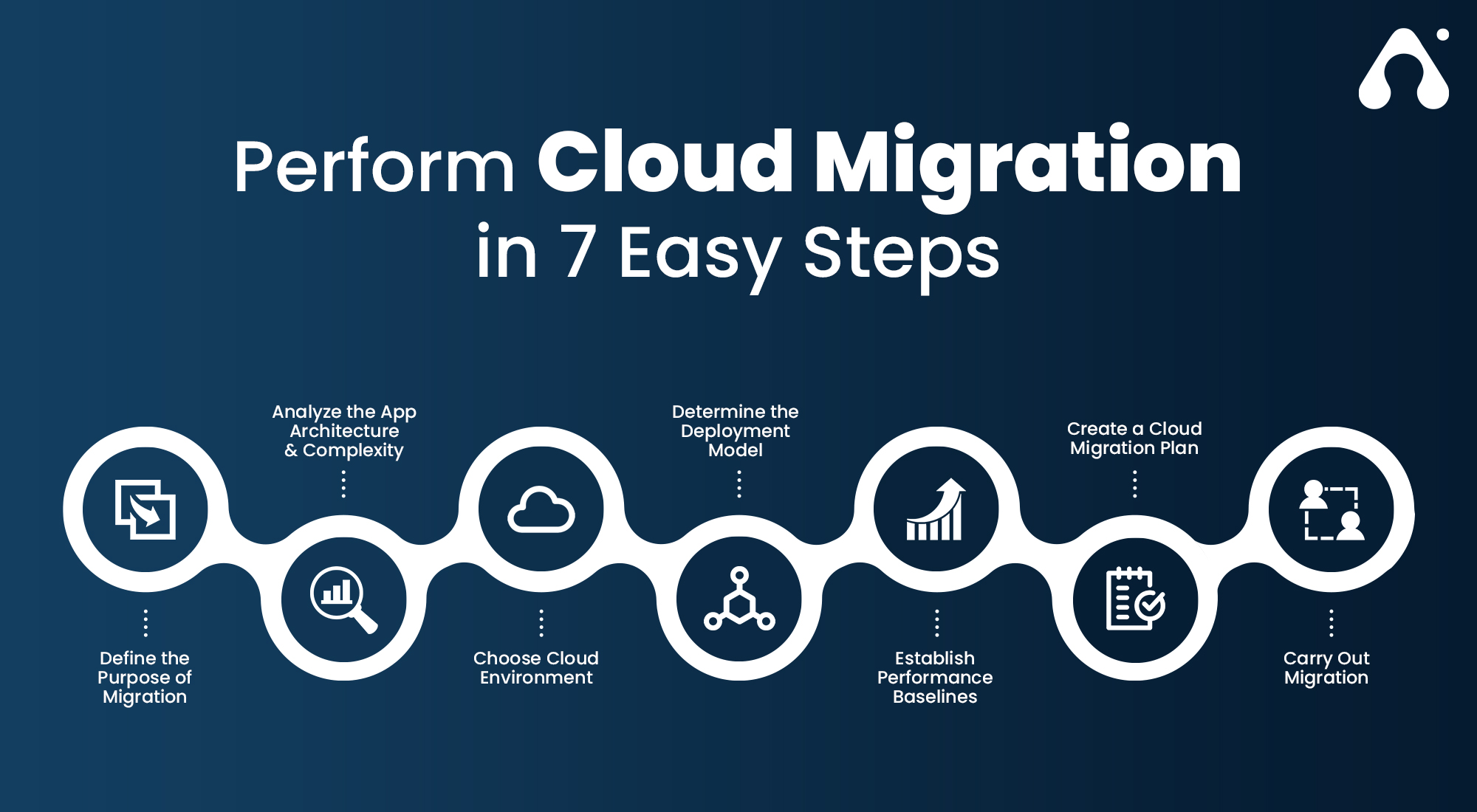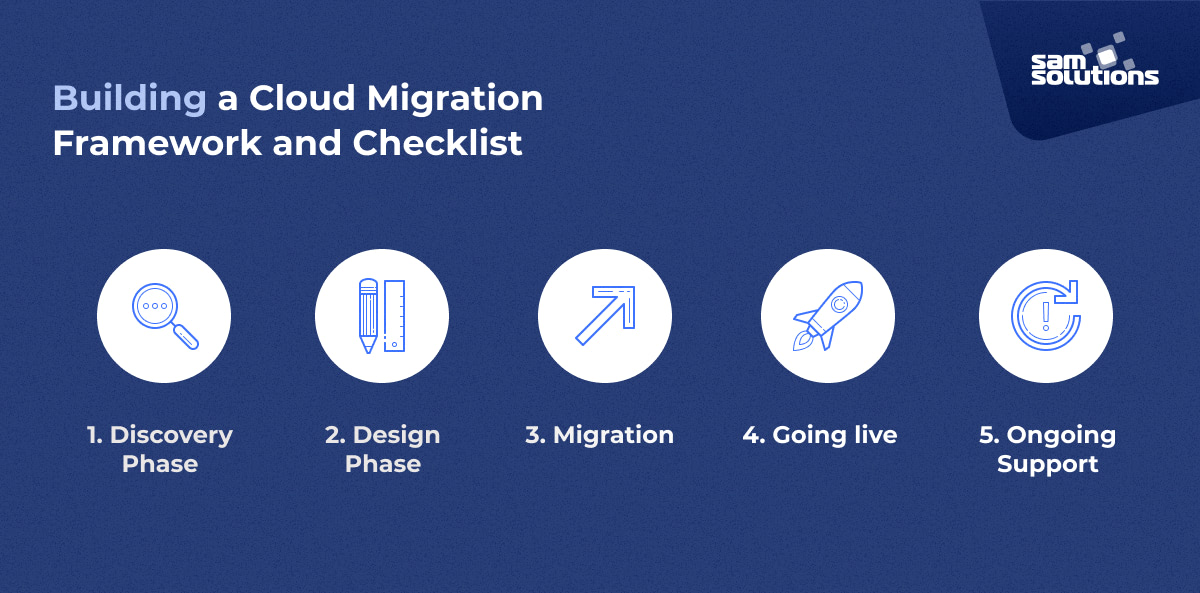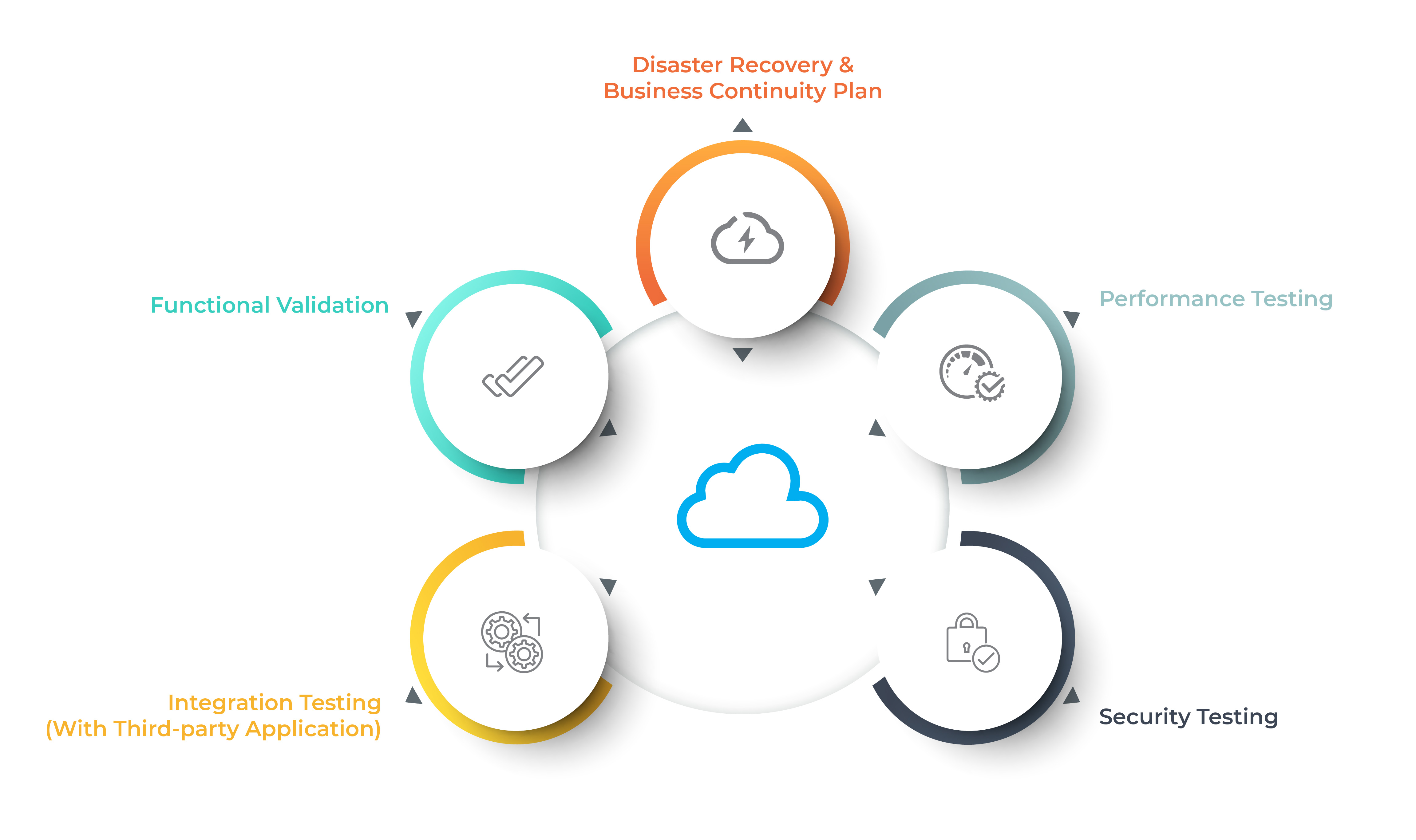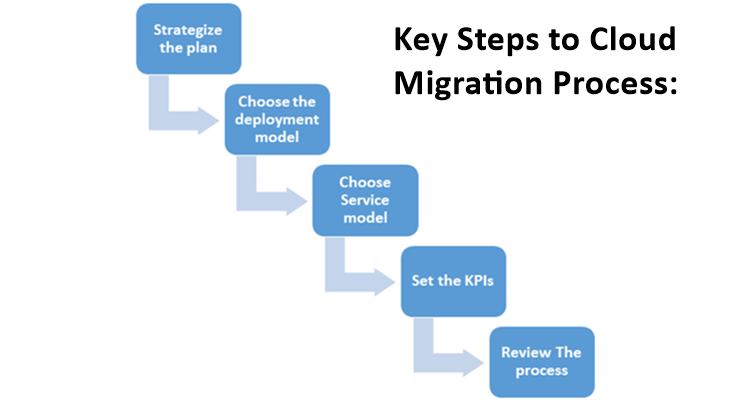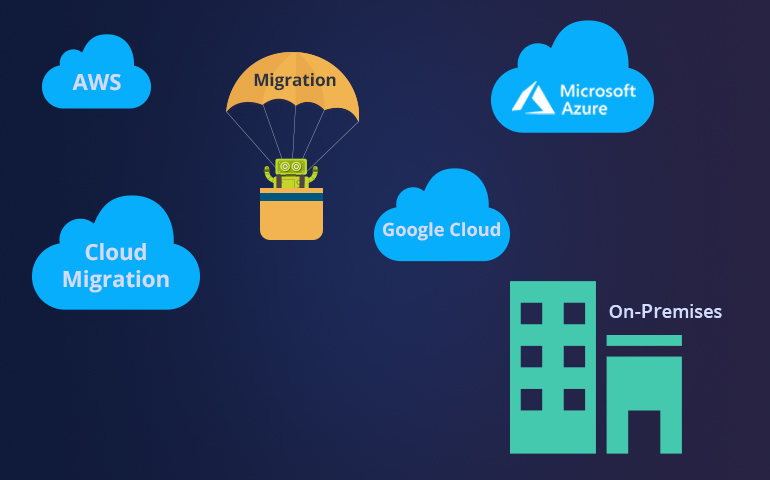Unraveling the Cloud Computing Migration Journey
Cloud computing migration has become a critical aspect of modern business strategy, enabling organizations to leverage the power and flexibility of the cloud. The global cloud computing market is projected to reach a staggering $1.25 trillion by 2028, demonstrating the growing significance of cloud adoption. A well-structured cloud computing migration strategy is essential to ensure a seamless transition, minimize disruptions, and maximize the benefits of the cloud.
Identifying the Ideal Cloud Solution: A Candid Discussion
Cloud computing migration offers a plethora of benefits, including cost savings, scalability, and increased collaboration. However, selecting the right cloud computing model is crucial to ensure a successful transition. Organizations can choose from three main cloud service models: Infrastructure as a Service (IaaS), Platform as a Service (PaaS), and Software as a Service (SaaS). Each model has unique features and advantages, making it essential to choose the one that best aligns with your organization’s requirements and objectives.
Infrastructure as a Service (IaaS)
IaaS provides virtualized computing resources, such as servers, storage, and networking, over the internet. This model offers the highest level of flexibility and control, allowing organizations to manage their applications, data, and operating systems. IaaS is an excellent choice for businesses that require scalable infrastructure for handling fluctuating workloads or those looking to reduce capital expenditures on hardware.
Platform as a Service (PaaS)
PaaS offers a complete development and deployment environment in the cloud, including infrastructure, operating systems, and middleware. This model enables developers to focus on building, testing, and deploying applications without worrying about the underlying infrastructure. PaaS is ideal for organizations looking to accelerate application development and reduce the time-to-market for new products and services.
Software as a Service (SaaS)
SaaS delivers software applications over the internet, eliminating the need for local installations and maintenance. This model enables users to access applications through a web browser or a thin client, making it an excellent choice for organizations looking to streamline their software infrastructure and reduce support costs. SaaS is particularly popular for collaboration tools, customer relationship management (CRM) systems, and human resource management (HRM) solutions.
When selecting a cloud computing model, consider factors such as cost, flexibility, control, and security. A well-informed decision will help ensure a smooth cloud migration process and maximize the benefits of cloud computing for your organization.
How to Conduct a Thorough Cloud Readiness Assessment
Before embarking on a cloud computing migration journey, it’s essential to conduct a comprehensive readiness assessment to ensure a seamless transition. A cloud readiness assessment evaluates your existing IT infrastructure, applications, and data to identify potential issues and areas that require improvement. By addressing these areas, you can minimize migration risks, reduce costs, and ensure a successful cloud adoption.
Step 1: Evaluate Your Current IT Infrastructure
Begin by assessing your current IT infrastructure, including hardware, software, and network components. Identify any outdated or incompatible systems that may hinder cloud migration. Additionally, consider the scalability and flexibility of your existing infrastructure to determine whether it can support your organization’s growth and changing needs.
Step 2: Review Applications and Services
Next, examine your organization’s applications and services. Determine which applications are cloud-ready and which may require modifications or replacements. Consider factors such as application architecture, dependencies, and integration with other systems. Additionally, assess the security and compliance requirements of each application to ensure they align with your cloud strategy.
Step 3: Analyze Data and Storage Requirements
Data migration is a critical aspect of cloud computing migration. Analyze your data and storage requirements, including data types, volumes, and access patterns. Identify any data privacy or security concerns and develop strategies to address them during migration. Additionally, consider the long-term data management and storage costs associated with your chosen cloud model.
Step 4: Evaluate Network Connectivity and Bandwidth
Cloud computing migration relies heavily on robust network connectivity and sufficient bandwidth. Evaluate your current network infrastructure and identify any potential bottlenecks or limitations that may impact cloud performance. Ensure that your network can support the increased data traffic and provide reliable, secure access to cloud resources for your users.
Step 5: Assess Organizational Readiness
Lastly, consider the human factor in cloud computing migration. Evaluate your organization’s readiness for cloud adoption, including staff skills, training needs, and change management strategies. Ensure that your team understands the benefits and challenges of cloud computing and is prepared to embrace the new technology.
By following these steps, you can conduct a thorough cloud readiness assessment and pave the way for a successful cloud computing migration. Remember that a well-prepared migration strategy is key to unlocking the full potential of cloud computing for your organization.
Planning a Robust Cloud Migration Strategy: Step-by-Step
A well-planned cloud migration strategy is crucial to ensure a smooth transition to the cloud and maximize the benefits of cloud computing. By following these steps, you can create a robust migration strategy tailored to your organization’s unique requirements and objectives.
Step 1: Define Clear Migration Objectives
Begin by establishing clear migration objectives that align with your organization’s overall business strategy. Consider factors such as cost savings, increased agility, improved collaboration, and enhanced security. Clearly defining your objectives will help guide your migration strategy and ensure that you stay on track throughout the process.
Step 2: Estimate Costs and Allocate Resources
Accurately estimating costs and allocating resources is essential for a successful cloud migration. Factor in expenses such as infrastructure, software, licensing, and personnel costs. Additionally, consider the long-term costs associated with cloud computing, such as data storage, management, and maintenance. Proper resource allocation will help ensure that you have the necessary skills and tools to execute a seamless migration.
Step 3: Develop a Realistic Timeline
Creating a realistic timeline is crucial for managing expectations and ensuring a smooth cloud migration process. Break your migration into smaller, manageable phases, and allocate sufficient time for each stage. Be prepared to adjust your timeline as needed to accommodate unforeseen challenges or changes in your organization’s needs.
Step 4: Choose the Right Cloud Deployment Model
Select the cloud deployment model that best suits your organization’s requirements and objectives. Public, private, and hybrid cloud models each have their unique advantages and disadvantages. Carefully evaluate each option based on factors such as cost, security, compliance, and performance to make an informed decision.
Step 5: Implement Security Measures
Security should be a top priority throughout the cloud migration process. Implement robust security measures, such as encryption, access controls, and multi-factor authentication, to protect your data and applications. Regularly review and update your security policies to address emerging threats and maintain the confidentiality, integrity, and availability of your cloud resources.
Step 6: Monitor Progress and Adapt as Needed
Regularly monitor your cloud migration progress and be prepared to adapt your strategy as needed. Use key performance indicators (KPIs) to measure success and identify areas for improvement. Continuously refine your cloud strategy to ensure it remains aligned with your organization’s evolving needs and objectives.
By following these steps, you can create a robust cloud migration strategy that ensures a smooth transition to the cloud and maximizes the benefits of cloud computing for your organization.
Mastering the Art of Data Migration: Best Practices and Pitfalls
Data migration is a critical aspect of cloud computing migration, often posing unique challenges related to data security, privacy, and integrity. By following best practices and addressing potential pitfalls, you can ensure a smooth data migration process and maintain business continuity throughout the transition.
Best Practice 1: Develop a Data Migration Plan
A well-defined data migration plan is essential for a successful transition. Identify the data to be migrated, establish a migration timeline, and allocate resources accordingly. Additionally, consider factors such as data format, storage requirements, and application dependencies to ensure a seamless migration process.
Best Practice 2: Ensure Data Security and Privacy
Data security and privacy should be a top priority during data migration. Implement robust encryption methods, access controls, and multi-factor authentication to protect sensitive data. Regularly review and update your security policies to address emerging threats and maintain the confidentiality, integrity, and availability of your data.
Best Practice 3: Validate Data Integrity
Data integrity is crucial during migration. Validate your data before, during, and after migration to ensure accuracy and completeness. Implement data validation checks, such as hash functions and consistency checks, to detect and correct any discrepancies or inconsistencies in your data.
Pitfall 1: Underestimating Data Migration Complexity
Data migration can be more complex than anticipated, often involving hidden dependencies, data format inconsistencies, and application compatibility issues. Thoroughly assess your data and applications before migration and allocate sufficient resources to address potential challenges.
Pitfall 2: Neglecting Data Backup and Disaster Recovery
Data loss or corruption can occur during migration, making data backup and disaster recovery crucial. Regularly back up your data and establish a disaster recovery plan to minimize downtime and ensure business continuity in the event of a migration failure or data loss.
Pitfall 3: Ignoring Post-Migration Data Validation
Post-migration data validation is essential to ensure the accuracy and completeness of your migrated data. Regularly monitor and validate your data after migration to detect and correct any issues that may have been overlooked during the migration process.
By following best practices and addressing potential pitfalls, you can master the art of data migration and ensure a smooth, secure, and successful cloud computing transition.
Ensuring Business Continuity: Navigating the Cloud Migration Process
Maintaining business continuity during the cloud migration process is crucial for ensuring a smooth transition and minimizing disruptions to your organization’s operations. By implementing effective strategies and managing risks, you can ensure a seamless migration and maintain productivity for end-users.
Strategy 1: Minimize Downtime
Downtime during migration can lead to lost productivity and revenue. Schedule your migration during off-peak hours, and use tools and techniques, such as data replication and load balancing, to minimize downtime. Additionally, communicate migration timelines and expectations to end-users to manage their expectations and minimize disruptions.
Strategy 2: Implement Rollback and Recovery Plans
Rollback and recovery plans are essential for addressing unforeseen issues during migration. Regularly back up your data and establish a rollback plan to quickly restore your systems to their pre-migration state in case of a failure. Implement a disaster recovery plan to ensure business continuity in the event of a migration-related incident or emergency.
Strategy 3: Manage Risks
Effective risk management is crucial during the cloud migration process. Identify potential risks, such as data loss, security breaches, and compatibility issues, and develop strategies to mitigate or eliminate them. Regularly review and update your risk management plans to address emerging threats and maintain business continuity throughout the migration process.
Strategy 4: Monitor Performance and Address Issues
Regularly monitor your cloud infrastructure’s performance during and after migration to detect and address any issues that may arise. Implement monitoring tools and techniques, such as log analysis and performance metrics, to track your cloud resources’ health and performance. Address any issues promptly to maintain business continuity and ensure a smooth migration process.
Strategy 5: Engage End-Users and Stakeholders
Engaging end-users and stakeholders throughout the cloud migration process is essential for maintaining business continuity. Communicate migration timelines, expectations, and benefits to end-users, and provide training and support to help them adapt to the new cloud environment. Regularly solicit feedback from end-users and stakeholders to identify and address any concerns or issues that may arise during migration.
By implementing these strategies, you can maintain business continuity during the cloud migration process, minimize downtime, manage risks, and ensure a seamless transition for end-users.
Optimizing Cloud Performance: Post-Migration Tips and Tricks
Optimizing cloud performance post-migration is crucial for maximizing return on investment (ROI) and ensuring long-term success. By implementing effective monitoring, scaling, and fine-tuning strategies, you can maintain optimal cloud performance and continuously improve your cloud infrastructure.
Tip 1: Implement Monitoring Tools
Monitoring tools are essential for tracking cloud performance and identifying potential issues. Implement tools that monitor resource utilization, performance metrics, and application behavior. Regularly review monitoring data to detect and address any performance issues or bottlenecks that may arise.
Tip 2: Implement Auto-Scaling
Auto-scaling is a powerful technique for optimizing cloud performance and reducing costs. Implement auto-scaling policies that automatically adjust cloud resources based on demand. Regularly review and update your auto-scaling policies to ensure optimal performance and cost efficiency.
Tip 3: Fine-Tune Cloud Resources
Fine-tuning cloud resources is crucial for maintaining optimal cloud performance. Implement techniques such as load balancing, caching, and content delivery networks (CDNs) to distribute traffic and reduce latency. Regularly review and update your fine-tuning strategies to ensure optimal performance and cost efficiency.
Tip 4: Implement DevOps Practices
DevOps practices, such as continuous integration and continuous delivery (CI/CD), are essential for optimizing cloud performance post-migration. Implement CI/CD pipelines that automate the testing, deployment, and delivery of applications. Regularly review and update your CI/CD pipelines to ensure optimal performance and cost efficiency.
Tip 5: Implement Security Best Practices
Security best practices are crucial for maintaining optimal cloud performance and ensuring data privacy and integrity. Implement robust security measures, such as encryption, access controls, and multi-factor authentication. Regularly review and update your security policies to address emerging threats and maintain the confidentiality, integrity, and availability of your cloud resources.
By implementing these tips, you can optimize cloud performance post-migration, maximize ROI, and ensure long-term success for your organization.
Measuring the Impact: Assessing the Success of Your Cloud Computing Migration
Assessing the success of your cloud computing migration is crucial for continuous improvement and long-term success. By defining key performance indicators (KPIs) and regularly measuring and analyzing your cloud performance, you can ensure that your cloud strategy aligns with your organizational needs and objectives.
KPI 1: Cost Efficiency
Cost efficiency is a crucial KPI for assessing the success of your cloud computing migration. Monitor your cloud spending and compare it to your pre-migration costs. Implement cost optimization strategies, such as reserved instances, spot instances, and auto-scaling, to reduce costs and maximize ROI.
KPI 2: Performance
Performance is another critical KPI for assessing the success of your cloud computing migration. Monitor your cloud resources’ performance, such as response time, throughput, and availability. Implement performance optimization strategies, such as load balancing, caching, and content delivery networks (CDNs), to maintain optimal performance and ensure a smooth user experience.
KPI 3: Security
Security is a crucial KPI for assessing the success of your cloud computing migration. Monitor your cloud infrastructure’s security posture, such as access controls, encryption, and multi-factor authentication. Implement security best practices, such as vulnerability assessments, penetration testing, and incident response planning, to maintain the confidentiality, integrity, and availability of your cloud resources.
KPI 4: Agility
Agility is a critical KPI for assessing the success of your cloud computing migration. Monitor your cloud infrastructure’s ability to adapt to changing business needs, such as scaling, deployment, and delivery. Implement DevOps practices, such as continuous integration and continuous delivery (CI/CD), to maintain agility and ensure a smooth and efficient development and deployment process.
KPI 5: User Experience
User experience is a crucial KPI for assessing the success of your cloud computing migration. Monitor your cloud infrastructure’s ability to provide a smooth and seamless user experience, such as response time, availability, and usability. Implement user experience optimization strategies, such as user feedback mechanisms, user analytics, and A/B testing, to maintain a positive user experience and ensure user adoption and satisfaction.
By defining and measuring these KPIs, you can assess the success of your cloud computing migration and continuously improve your cloud strategy to align with your organizational needs and objectives.

